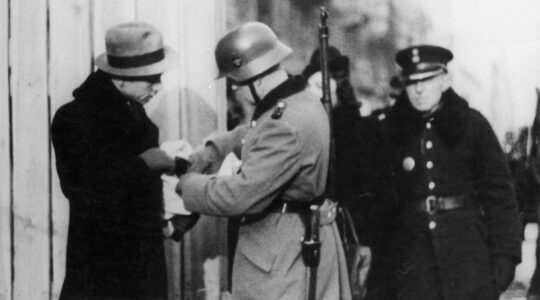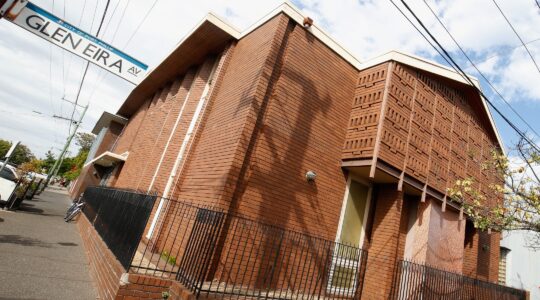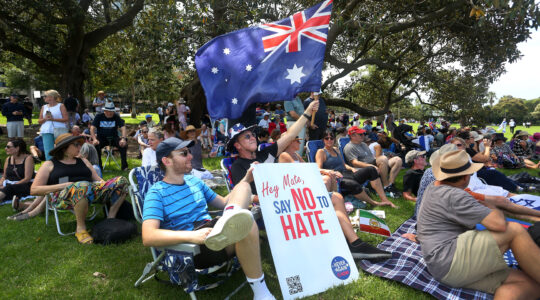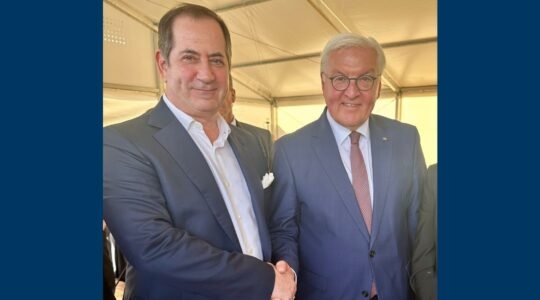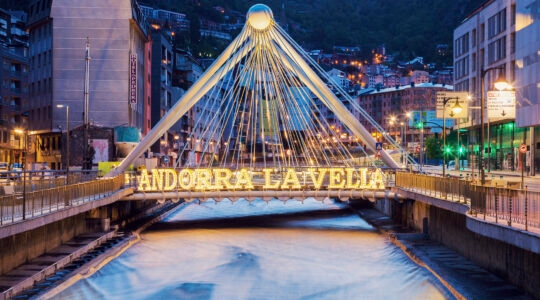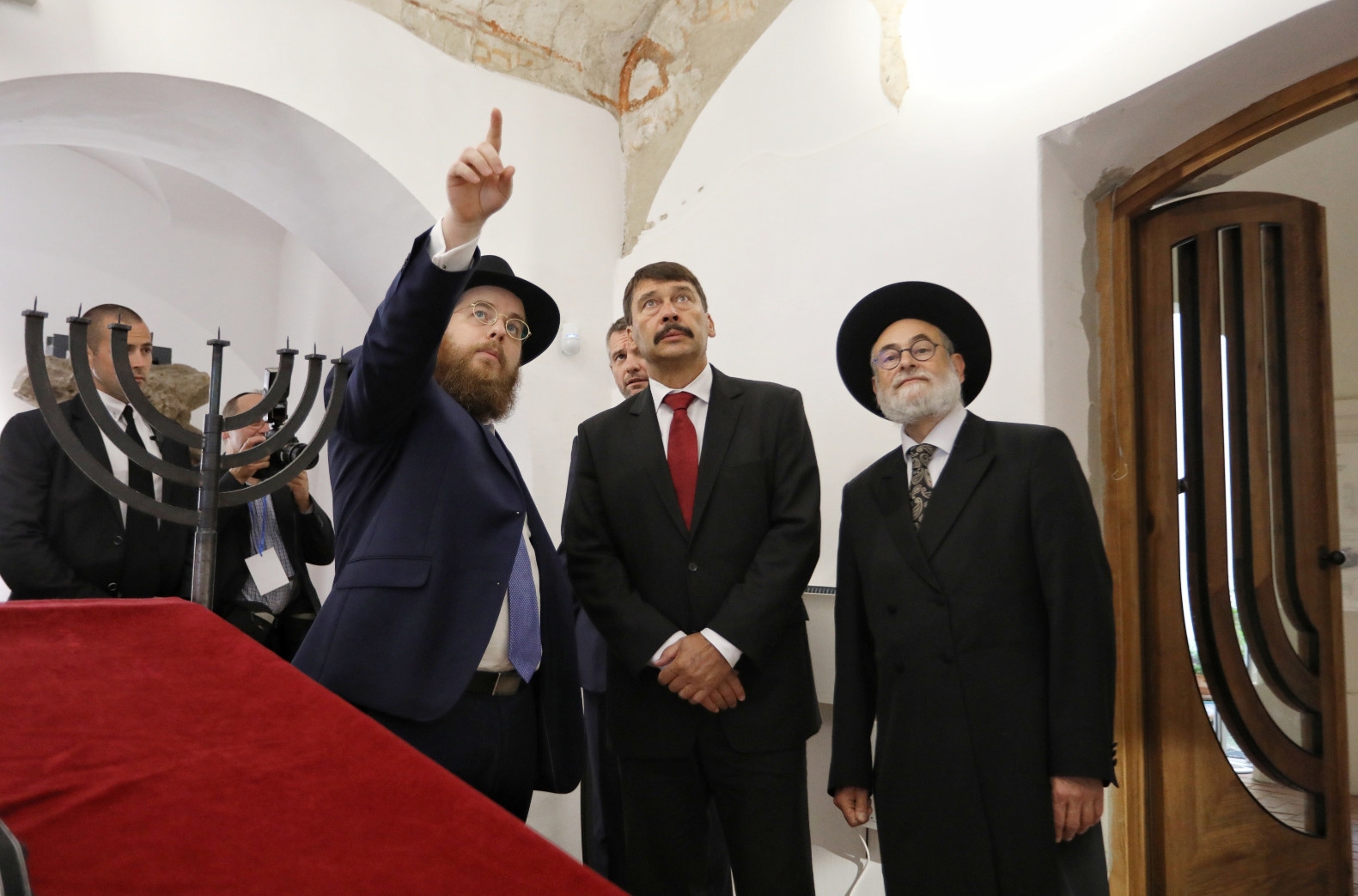
Rabbi Slomo Koves, left, guides Hungarian President Janos Ader, center, and Dutch Chief Rabbi Binyomin Jacobs at the Buda Castle Synagogue, Sept. 6, 2018. (Márton Merész)
(JTA) — A former synagogue in Hungary’s capital city that had not been used as a place of worship in centuries reopened as a Jewish house of worship in a ceremony attended by the country’s president.
President János Áder attended the rededication and opening ceremony of Buda Castle Synagogue on Thursday as a guest of the Chabad-affiliated EMIH federation of Jewish communities, the organization said in a statement.
The synagogue on Táncsics Street, which used to be a Jewish museum, was opened especially in time for Rosh Hashanah, the Jewish New Year.
Budapest, whose name is a mashup of the two parts of the city comprising the metropolis, has dozens of synagogues. But a vast majority of them are in Pest, which is the bustling part of the city east of the Danube River. Placid and hilly Buda, by contrast, contains most of the city’s foreign embassies, many churches and museums. But it has only a handful of synagogues.
Buda had many more Jews before the Holocaust, but those who survived the genocide were all moved to Pest, with few returning to Buda. Some 100,000 Jews live today in Hungary, mostly in Budapest.
“Seeing this place 70 years after the Holocaust, seeing hundreds of people celebrating this special event in the Buda Castle with their heads held high, in the presence of the honorable president, I can hear the footsteps of Israel’s final redemption,” Rabbi Shlomo Koves, who heads EMIH, said in a speech at the ceremony.
A Budapest-born rabbi, Asher Faith, will lead the synagogue, which sits near one of the main city gates built in the Middle Ages and is still known as the Jewish Gate. It is also near the Hungarian National Gallery inside the Buda Castle Palace – an imposing 13th-century structure.
Others attending the ceremony included Dutch Chief Rabbi Binyomin Jacobs, who represented the Rabbinical Centre of Europe, an Orthodox umbrella body.
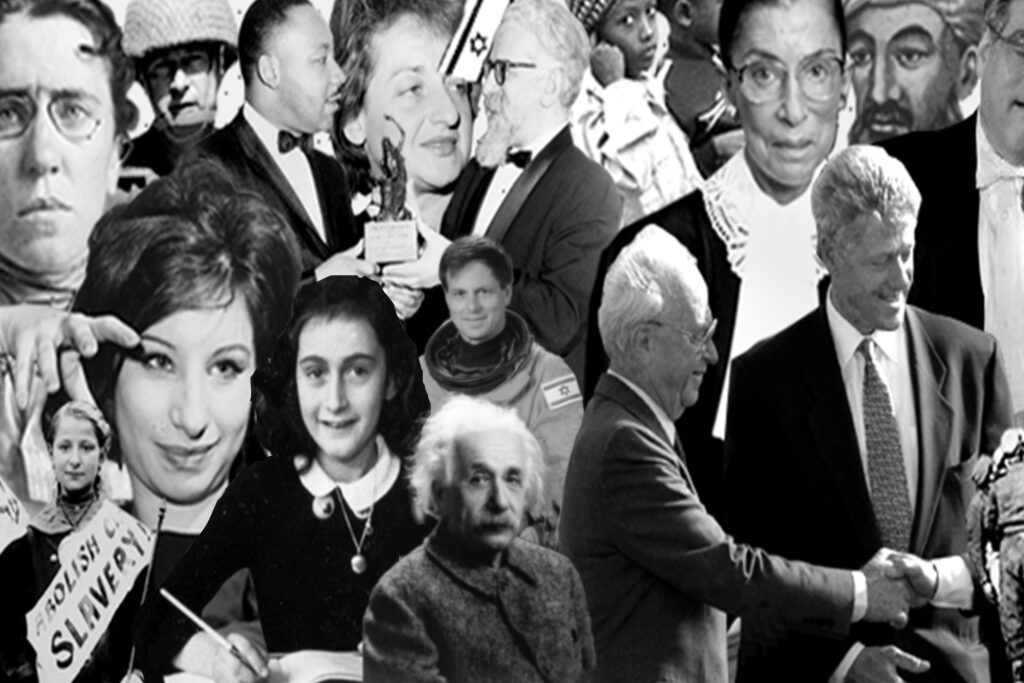
Help ensure Jewish news remains accessible to all. Your donation to the Jewish Telegraphic Agency powers the trusted journalism that has connected Jewish communities worldwide for more than 100 years. With your help, JTA can continue to deliver vital news and insights. Donate today.

